Halbach Array Information
Klaus HalbachThe Halbach array is named for its inventor Klaus Halbach, a Berkley Labs physicist in the engineering division. The array was originally designed to help focus the beams in particle accelerators. In the picture on the left, Klaus Halbach in 1986 with Kwan-Je Kim discussing a model of an undulator that Halbach designed. |
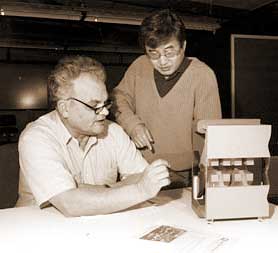 |
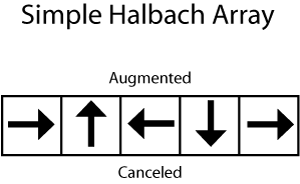 |
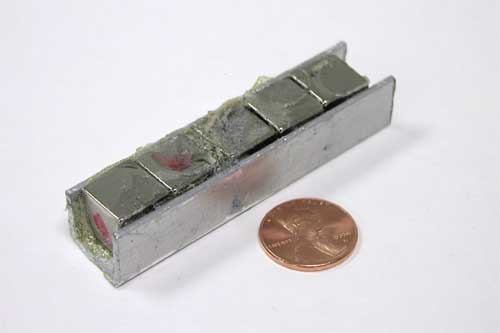 |
| The halbach array in the drawing above was quick, fairly easy, and inexpensive to build. It took me about 20 minutes to put it all together. It is true that my first attempt was crude and ugly, but I have promised myself that the second one will be much cleaner. A lot was learned the first time around, but more importantly I had a lot of fun trying to coax the magnets into this array. And if fun isn't enough of a reason to justify the monstrosity pictured here, perhaps science is? The most important thing about the assembly above is that it works!
The other cool, and fairily significant feature of the halbach array is that it can be extended by repeating the pattern. Bigger is better, right? Halbach arrays can also be assembled in circles, but would require custom magnets. |
|
 |
|
| So far, the most promising commercial application for the halbach array is the Inductrack maglev train. This maglev technology isn't just for trains. Apparently nasa is also considering it as a means to give their rockets a jump start. Fuel savings could be nearly 40%. There is some good information at this DOE link.
A good article on halbach arrays as they apply to maglev trains can be found here. Other potential applications include people movers; spark-free mine cars; and high-speed, intercity freight shipments, where sealed capsules are levitated within 1meter-diameter underground tubes. Curved Space |
|
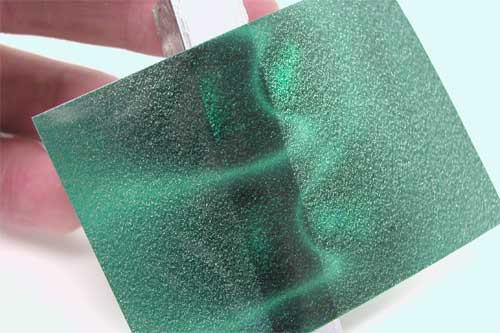 |
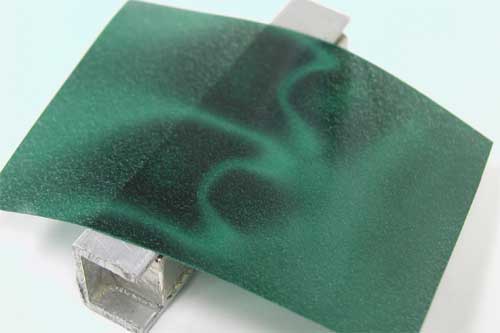 |
|
The pictures above show the lopsided shape of the array's magnetic field using Magnetic Viewing Film. Notice how the field appears to be open on the left, and closed on the right? That is your first indication of what a halbach array actually is. The array is nothing more than 5 identical magnets strategically positioned to create a one sided super magnet. In this example, I used 5 of our 12mm cubes. The magnetic field is agumented on one side (the left side here) and diminished on the other. The strategic positioning of the magnets serves to bend the magnetic field and force it to one side. A very clever idea. The halbach array with magnetic viewing film is a fun and simple demonstration of the downright odd nature of magnets. How much stronger? |
|
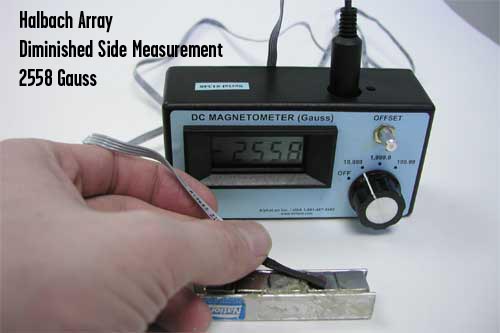 |
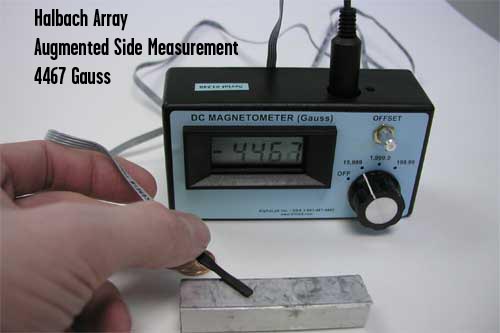 |
|
The pictures above show surface gauss measurements being taken on the halbach array. The image on the left shows the measurement of the diminished side to be about 2550 gauss. The image on the right shows the augmented side (hidden beneath the aluminum) at about 4460 gauss. That is 2000 gauss more than the other side. Not bad. Note that the augmented side is also hidden by at least 1mm aluminum. 1mm may not seem like a lot, but in the world of magnetic air-gaps, 1mm represents thousands of gauss. The next (not so sloppy) halbach array will have the agumented side facing up and completely exposed for a full surface gauss reading. Just for grins |
|
Since more information is always better, I decided to look at some un-halbached magnets with the gaussmeter. The results were about what I suspected. The pattern of alignment for the magnets was the closest thing to natural that I could think of. |
|
| As you can see from the picture on the right, a raw 12mm N38 cube magnet has about 4440 surface gauss on the pole. In the pictures below there are 6 poles facing up. 3 N poles and 3 S poles. The picture on the left shows what happens when you cover the magnets up with the 1mm thick aluminum and read through the imposed air-gap. The result is almost 1500 gauss less at 2955. |
|
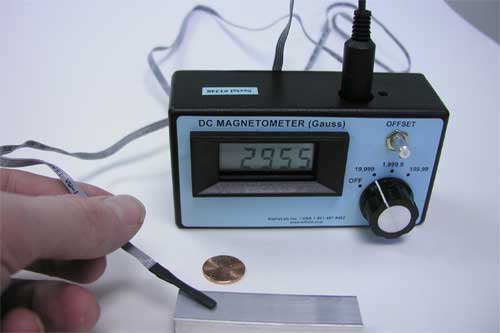 |
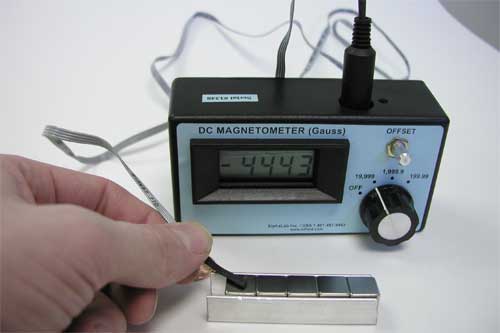 |
Since the readings on the non-halbach array show that there is about a loss of about 1500 gauss in the 1mm air-gap, I am going to assume that a measurement on the surface of the augmented side of my halbach array will measure 1500 gauss more. That would make a total surface gauss on the two poles of my halbach array almost 6000 gauss. |
|

